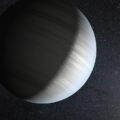A new instrument named NEID, the NN-explore Exoplanet Investigations with Doppler spectroscopy, has come online, providing a powerful new tool to exoplanet hunting researchers looking for alien worlds. Using a spectrograph connected to the WIYN 3.5m telescope at the Kitt Peak National Observatory in Arizona, the tool developed by Pennsylvania State University will not only look at previous discovered exoplanets in hopes of characterizing their compositions and atmospheres, but is also designed to spot entirely new, potentially Earth-sized worlds outside our own solar system not yet identified.
BACKGROUND: HISTORIC HUNT FOR EXOPLANETS
Astronomers spotted the first exoplanet in 1995. Since then, over 4,000 alien worlds have been identified, with thousands more waiting to be confirmed. Most of those discoveries have been made by space-based observatories, mainly due to their ability to peer deeper into the cosmos without Earth’s atmospheric interference. Now, new software tools and improved land based telescopes are starting to change that equation.
ANALYSIS: USING NEID TO SPOT EXOPLANETS FROM EARTH
NEID’s moniker is derived from the word that means “to see” in the native language of Tohono O’odham, the person who owns the land on which the Kitt Peak National Observatory is located. And “see” is exactly what the new spectrograph/software tool is designed to do.
According to a press release issued by the Texas Advanced Computing Center, (TACC) on the campus of the University of Texas at Austin whose supercomputers support the new system, “NEID does this by breaking down visible light from distant stars into its component wavelengths with a spectrograph, like a simple prism does but with additional parts such as diffraction gratings.”
To detect these minute shifts in a star’s wavelength over time, a possible sign of an exoplanet in its orbit, the NEID system relies on the Doppler Effect. More commonly understood in relation to sound waves, where a car horn or other receding sound lowers in pitch the farther away it gets, NEID uses these shifting wavelengths in light waves to give researchers who use this new tool a wide array of information about the observed star. In all, NEID collects and processes about 150 gigabytes of light data each night, before shipping its bounty to Cal Tech and ultimately TACC for analysis.
“NEID is the first of hopefully many collaborations with the NASA Jet Propulsion Laboratory (JPL) and other institutions where automated data analysis pipelines run with no human-in-the-loop,” said Joe Stubbs, the TACC group’s leader on the NEID project.
OUTLOOK: THE FUTURE OF EXOPLANET HUNTING
According to the press release, “thousands of alien worlds are known to orbit stars beyond our solar system. And many more worlds, possibly harboring life, lie waiting to be discovered.”
That discovery is moving a step closer with NEID.
“We’re proud that NEID is available to the worldwide astronomical community for exoplanet discovery and characterization,” said Jason Wright, a professor of astronomy and astrophysics at Penn State and a NEID project scientist. “I can’t wait to see the results we and our colleagues around the world will produce over the next few years from discovering new, rocky planets, to measuring the compositions of exoplanetary atmospheres, to measuring the shapes and orientations of planetary orbits, to characterization of the physical processes of these planets’ host stars.”
Follow and connect with author Christopher Plain on Twitter: @plain_fiction
